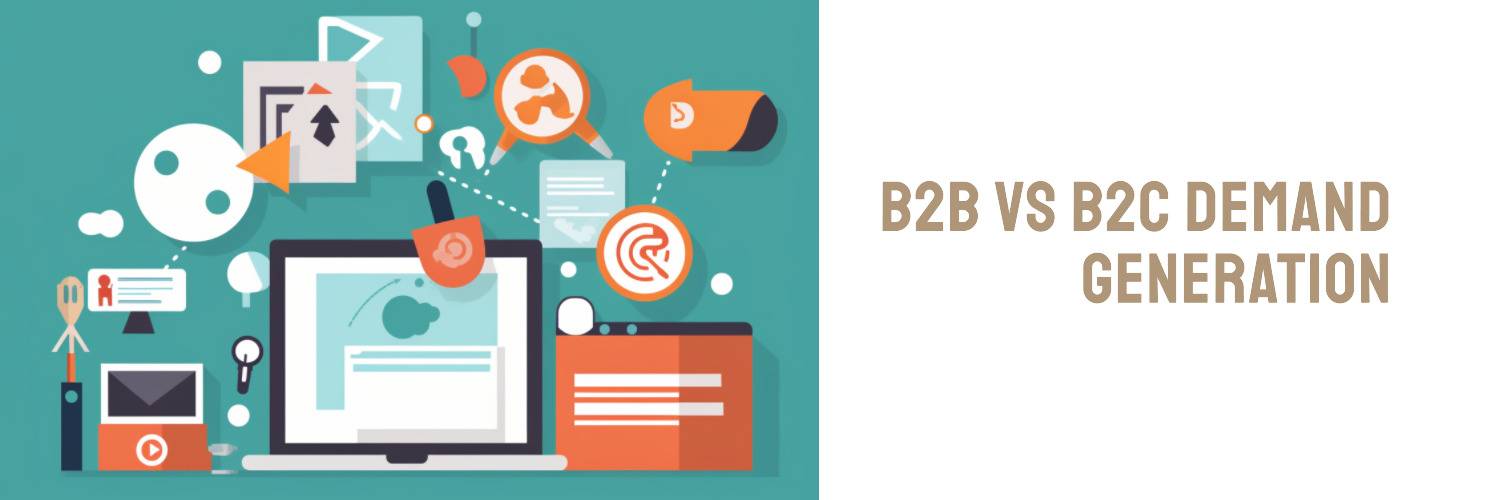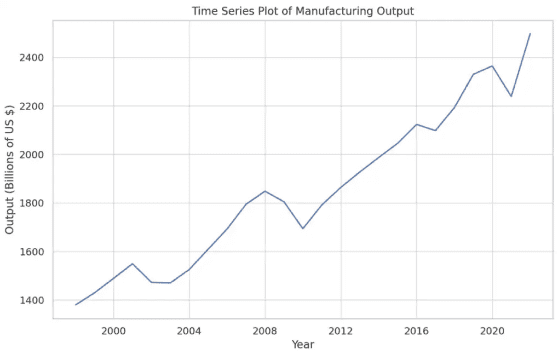B2B Demand Generation Strategy: 7 Best Practices to Follow
Dive into the world of B2B demand generation with a strategic guide that illuminates seven best practices for effectively capturing and nurturing leads.





Table of contents
B2B demand generation strategy: A game-changer in today’s market
In the ever-evolving world of business, B2B demand generation strategy has emerged as a cornerstone of successful marketing. But what is it exactly? Let’s dive in.
A B2B demand generation strategy is a comprehensive approach aimed at driving awareness and interest in a company’s products or services. It integrates various marketing disciplines to create a continuous relationship with potential buyers across different stages of the sales funnel. In essence, it’s the roadmap that navigates your target audience from unawareness, through interest and consideration, all the way to the final purchase.
The significance of this strategy in B2B marketing simply cannot be overstated. In a landscape where the buyer journey is far from linear and the sales cycles are often lengthy, B2B companies need more than sporadic marketing efforts to garner sustained interest and convert leads into loyal customers. This is where a well-executed demand generation strategy steps in, aligning marketing and sales efforts, and creating a reliable engine for business growth.
Let’s break it down even further:
- B2B Marketing Landscape: B2B, or business-to-business, marketing is unique. Unlike B2C scenarios, the decision-making process involves multiple stakeholders and the stakes are typically much higher. Therefore, your marketing strategy must resonate with an entire buying committee rather than a single consumer.
- Importance of Demand Generation: The main objective of demand generation is to build and nurture key prospect and customer relationships for the long term. In contrast to lead generation, which often focuses on short-term wins, demand generation is about creating sustainable growth. By developing a robust demand generation strategy, B2B companies can establish trust, position themselves as thought leaders, and ultimately, influence buying decisions in their favor.
- The Role of a B2B Demand Generation Strategy: A B2B demand generation strategy serves as a blueprint for your marketing efforts. It outlines how to attract and engage your target audience, how to guide them down the sales funnel, and how to leverage various marketing tools and channels to maximize ROI.

In the following sections, we will delve into seven best practices for building an effective B2B demand generation strategy. Whether you’re a seasoned marketing veteran or just starting out in the B2B realm, these actionable insights will equip you with the knowledge needed to succeed in today’s competitive marketplace.

Understanding the differences: B2B vs B2C demand generation
Let’s dive headfirst into the pool of marketing strategy. And while we’re at it, let’s clarify something that often muddles up the water: B2B and B2C demand generation. At first glance, they might seem like twins. Yet, dig a bit deeper, and you’ll uncover a world of difference.
B2B demand generation, on one hand, is a meticulous art. A dance that delicately balances complex business relationships, long sales cycles, and larger deal sizes. The audience? Decision-makers, not individual consumers. They’re savvy, shrewd, always seeking the best value for their company’s investment.
Picture this. You’re sitting across a seasoned CEO in a negotiation, arguing the merits of your product or service. That’s B2B demand generation in a nutshell. It’s your marketing and sales teams working in perfect tandem, equipping that CEO with every reason to choose you over the competition.
On the flip side, B2C demand generation is like a bustling marketplace. Quick transactions, emotional triggers, individual wants and needs. It’s persuasive advertisements and attractive pricing, all carefully engineered to convince consumers to open their wallets. In essence, it’s your business screaming “Pick me!” the loudest amidst a sea of eager competitors.
Now, as we untangle this intricate web of B2B and B2C demand generation, it’s critical to acknowledge the unique considerations for B2B companies. Let’s spill the beans, shall we?
Content is king
Remember, B2B buyers are a different breed. They yearn for information, not just persuasion. A robust content marketing strategy for B2B is essential to nurture leads and build trust.
Long sales cycle
Patience is more than a virtue in B2B marketing. It’s a necessity. Nurturing a lead from curiosity to conversion is a marathon, not a sprint. Be prepared for it.
Personalization
In the B2B realm, personalization is a potent weapon. Tailoring your marketing message to resonate with specific decision-makers can be the game-changer.
Data-driven approach
Let data be your compass. Using insights from data-driven demand generation can help align your marketing efforts with the interests and behaviors of your target audience.
Grasping these differences is a giant leap forward in mastering your B2B demand generation strategy. And remember, the devil’s in the details. Embrace the nuances, and you’ll be well on your way to success.

The seven best practices for B2B demand generation
In today’s dynamic business world, the significance of a powerful B2B demand generation strategy cannot be overemphasized. One of the instrumental practices shaping such strategies centers on harnessing data effectively.
Practice 1: Leveraging data for better targeting
The advent of big data has revolutionized the B2B landscape, positioning data at the heart of any successful demand generation strategy. From customer preferences and purchase history to industry trends, data provides indispensable insights that help define your target audience more accurately and tailor your messaging accordingly.
A holistic understanding of your potential customers, their needs, behaviors, and pain points, allows you to design highly personalized marketing campaigns. These campaigns can resonate more deeply with your audience, ultimately leading to improved lead quality and conversion rates.
Let’s take a look at a case study to further exemplify the role of data in B2B demand generation.
Case study: Successful data-driven demand generation for Spektrix
Spektrix, one of the fastest-growing tech companies in Europe goal was to increase the number of leads and opportunities generated through their website.
The challenge
- Spektrix needed to improve their demand generation efforts to extend their reach to the right decision-makers further along the sales pipeline.
The solution
- They developed a robust demand generation strategy, rooted in a clear understanding of their ideal customers.
- They created a strategically sound and clearly defined demand generation roadmap, underpinned by measurable objectives and KPIs.
The results
- Spektrix saw a 300% increase in leads generated through their website.
- They also saw a 200% increase in opportunities generated through their website.
- The targeted email marketing campaign had an open rate of 40%, which is well above the industry average.
Key takeaways
- A data-driven demand generation strategy can be highly effective in generating leads and opportunities.
- A combination of inbound and outbound marketing tactics can be used to reach a target audience.
- Content marketing can be used to provide value to potential customers and establish thought leadership.
- Targeted email marketing can be highly effective in reaching potential customers.
- Measuring results is important to determine the success of a demand generation strategy.

Practice 2 - Implementing effective content marketing: A key component in B2B demand generation
Content marketing – it’s a buzzword you’ve probably heard a thousand times. But when it comes to B2B demand generation, it’s more than just a buzzword. It’s a vital cog in the machinery that drives leads and fosters growth. Let’s delve into why.
Content marketing acts as the fuel for your B2B demand generation engine. It’s the rich, informative, and engaging content that not only pulls in potential customers but also nurtures them through the sales funnel. And why is that? Well, the answer lies in the uniqueness of B2B transactions.
B2B buyers aren’t making impulsive decisions. They need concrete reasons, solid evidence, and clear solutions. That’s where content marketing steps up, bridging the gap between your brand’s solutions and your customers’ needs. But hey, don’t take my word for it. Let’s look at some of the ways businesses have leveraged content marketing for their B2B demand generation.
B2B content strategies in action: From theories to wins
There’s no one-size-fits-all in content marketing, especially in the B2B domain. Here are three different flavors of successful B2B content strategies.
The thought leadership approach
Remember when IBM coined the term “e-business” back in the late 90s? That wasn’t just a cool phrase. It was a whole content marketing campaign aimed at positioning IBM as a forward-thinking leader in the emerging world of internet business. And guess what? It worked.
The data-driven strategy
Mailchimp, the popular email marketing service, regularly publishes comprehensive reports featuring deep insights into industry trends. What does that achieve? It positions them as an authority, a trusted source of valuable information. And that’s precisely the kind of credibility that B2B buyers appreciate.
The content hub technique
Adobe’s com.com is a classic example. They created a whole content hub featuring articles, insights, and interviews on marketing topics. Not directly related to Adobe’s products, you say? Well, indirectly, it’s all connected. CMO.com helped position Adobe as a knowledgeable and helpful partner for marketing professionals.
These examples aren’t just successful strategies, they’re lessons. They demonstrate that effective content marketing in the B2B realm isn’t about pushing a sales pitch. It’s about showcasing your brand’s value, proving your credibility, and building a relationship with your audience. So, get that content engine revving. After all, demand generation in the B2B sector isn’t a sprint, it’s a marathon.
Practice 3 - Utilizing B2B marketing automation tools: Powering demand generation
As our digitally-driven world turns ever faster, leveraging technology becomes not merely an advantage, but a necessity. Particularly, in the realm of B2B marketing, automation tools stand tall as critical enablers. Why? Simple – they streamline and supercharge B2B demand generation. They’re your secret weapon, your silent partner, propelling your strategy into the stratosphere.
The a-list: Top tools for B2B demand generation
Let’s dive into some tools that make a substantial impact, driving B2B demand generation and simplifying your life simultaneously. Bear in mind, every tool carries its unique strengths, so align your choice with your specific goals and needs.
- Crm systems: Think salesforce, hubSpot, or zoho. Crm systems help manage and analyze customer interactions and data. They track every touchpoint, offering a holistic view of your customer journey, making them instrumental in nurturing leads and driving engagement.
- Email marketing platforms: Consider mailchimp or constant contact. These platforms simplify creating, sending, and analyzing email campaigns. Coupled with automation, you can set triggers and responses, crafting a personalized journey for your leads.
- Social media management tools: Look towards hootsuite or buffer. These tools allow you to schedule posts, monitor brand mentions, and analyze social media performance across multiple platforms, all from a single dashboard.
- Analytics tools: Google analytics is the prime example. Measuring the effectiveness of your campaigns is crucial, and these tools offer you a data-driven snapshot of your performance.
- Marketing automation platforms: Check out marketo, pardot, or eloqua. They integrate with your crm and other tools to automate repetitive tasks, lead scoring, segmentation, and nurturing, enhancing your overall demand generation strategy.


The perks of automation: Streamlining B2B demand generation
Imagine removing the shackles of mundane, repetitive tasks, freeing your team to focus on more strategic, higher-value activities. That’s the promise of automation.
Here’s how automation smooths the path of your B2B demand generation efforts:
- Saves time: Automation tools handle repetitive tasks such as email sending, social media posting, and more, freeing up precious hours in your day.
- Enhances personalization: Leveraging data, you can create personalized experiences across different stages of the customer journey. This leads to improved engagement and, ultimately, more conversions.
- Improves scalability: As your business grows, the workload increases. Automation tools can effortlessly handle this growing volume, ensuring your demand generation efforts don’t falter.
- Delivers consistent communication: Automation ensures your audience receives regular, consistent communication, building trust and reinforcing your brand image.
- Provides valuable insights: Most automation tools come with built-in analytics, offering insights into your campaign performance and helping you make data-driven decisions.
Navigating the world of B2B marketing can be complex. But with the right automation tools at your disposal, your journey towards effective demand generation can be a journey of discovery, of connection, and of consistent growth. Remember, the key is to integrate these tools seamlessly into your strategy, maintaining a human touch amidst the automated processes, and staying connected with the ever-evolving needs of your customers.
Practice 4 - Personalization in B2B marketing
Engaging with a modern audience requires more than a generalized approach. Today, the savvy consumer seeks unique, personalized experiences tailored to their specific needs. This notion is particularly vital in the world of B2B marketing, where forging strong, personalized relationships can significantly impact the success of your demand generation strategy.
Why personalization matters in the B2B customer journey
Personalization in B2B marketing isn’t just a fancy trend, it’s a necessity. It offers a powerful way to connect with customers by delivering customized experiences that mirror their specific needs and interests. After all, every customer’s journey is unique, and personalization ensures that you’re respecting that uniqueness.
In the B2B landscape, where relationships often involve high-stakes decision-making, lengthy sales cycles, and multiple decision-makers, personalization becomes even more crucial.
In essence, personalization in the B2B customer journey helps:
- Strengthen customer relationships
- Enhance customer experience
- Boost customer loyalty
- Increase conversion rates


Strategies for implementing personalization in your B2B demand generation strategy
- Understand your customer: Start with a thorough understanding of your customer. Leverage data-driven insights to create detailed customer personas. These personas can guide your personalization efforts and help you craft content that resonates.
- Segment your audience: Not all customers are the same, even within the same industry. Segment your audience based on shared characteristics and tailor your messaging to each segment. This level of targeting can dramatically increase engagement.
- Personalized content: Once you know your audience, create personalized content that aligns with their needs and interests. This could range from blog posts and eBooks to webinars and personalized emails.
- Use personalization tools: Take advantage of B2B marketing automation tools that can help with personalization. These tools can automate tasks like sending personalized emails based on user behavior, leading to more meaningful interactions.
- Personalized customer journeys: Map out personalized customer journeys based on the data you’ve gathered. This allows you to guide prospects through the sales funnel in a way that aligns with their specific needs and preferences.
Practice 5 - Digital transformation - A game changer in B2B marketing
In today’s world, digital transformation isn’t just a buzzword—it’s an essential component of a successful B2B demand generation strategy. This powerful force is causing waves across industries, completely altering traditional business operations, marketing approaches, and customer interactions. So, how are digital trends influencing the B2B landscape, and what part does Artificial Intelligence play? Let’s explore.
Harnessing the power of digital trends
The wave of digital transformation is reshaping the terrain of B2B demand generation in profound ways. Its effects can be seen in a multitude of areas:
Increased efficiency
Innovative tools and technologies are boosting efficiency, enabling businesses to generate higher quality leads with less manual effort. This comes as a welcome relief in an era where time is a precious resource.
Enhanced customer experience
Through advanced analytics and personalization tools, companies can now understand their customers on a deeper level, providing highly personalized experiences that align with individual needs and preferences.
Better decision making:
With vast amounts of data at their fingertips, businesses can make more informed decisions, fine-tuning their strategies based on real insights rather than gut feelings.
The rise of artificial intelligence in B2B marketing
Artificial intelligence (AI) has moved beyond the realm of science fiction and has firmly entrenched itself within the modern business world. But its role in B2B marketing? Now that’s something to behold.
AI has the potential to revolutionize B2B demand generation strategies in several ways:
Predictive analytics
AI can help predict future trends based on past behaviors, providing businesses with invaluable foresight. This helps companies target their efforts more effectively, ultimately leading to higher conversion rates.
Automated content creation
Using AI, businesses can automate parts of their content creation processes, ensuring a steady flow of engaging material to nurture leads and maintain customer interest.
Chatbots and virtual assistants
AI-powered chatbots can provide instant, personalized responses to customer queries, boosting engagement and freeing up valuable time for your team.
Improved personalization
AI allows for the implementation of dynamic content and hyper-personalization, tailoring each interaction to the individual customer’s needs and preferences.
Practice 6 - Influencer marketing in the B2B landscape: A powerhouse strategy
Let’s play a game of association. When I say influencer marketing, you’re likely to think of glamorous Instagram posts and flashy YouTube videos geared towards consumers, right? Well, it’s time to think again. Influencer marketing has carved out a significant niche for itself within the B2B landscape. As surprising as it might seem, B2B influencer marketing is emerging as a force to reckon with in generating business demand.
The potent role of Influencers in B2B demand generation
In the complex arena of B2B marketing, trust and credibility reign supreme. It’s not just about the product or service, it’s about the value, the story, and, most importantly, the people behind it. This is where influencers step in, opening doors and building bridges.
Influencers in the B2B world are often industry thought leaders, respected professionals, or specialists within their field. They command an audience that trusts their judgment and values their expertise. By associating with these influencers, B2B businesses can enhance their visibility, lend credibility to their offerings, and ultimately drive demand.
Strikingly, this isn’t simply a theory. Companies that have embraced B2B influencer marketing have seen measurable outcomes. The use of influencer testimonials and thought-leadership content has been instrumental in boosting engagement rates, improving lead quality, and shortening the sales cycle.
Building effective collaborations: The art and science of B2B influencer strategies
Venturing into B2B influencer marketing can feel like navigating uncharted territory. But with the right strategies in place, you can unlock its potential. Here’s how:
Identify the right Influencers
Your ideal influencer should not only have a significant following but also be a good fit for your brand. Look for industry experts who align with your brand values and have an audience that matches your target demographic.
Build mutually beneficial relationships
Influencer relationships should be a two-way street. While influencers can help enhance your brand’s visibility and credibility, consider what you can offer them in return. This could be exclusive access to your products, opportunities for co-creation, or even financial compensation.
Leverage a variety of content formats
B2B influencer content isn’t confined to blog posts or whitepapers. Consider leveraging video interviews, podcast episodes, social media takeovers, or even virtual event partnerships.
Measure and refine
As with any marketing strategy, measurement is key. Make use of B2B demand generation metrics to track the success of your influencer campaigns and refine your approach based on the data.
In the ever-evolving landscape of B2B marketing, staying ahead of the curve is paramount. And as we look to the future, the role of influencer marketing in driving B2B demand generation is set to become more prominent than ever. So, it’s high time we expand our game of association and welcome influencers into the B2B fold. After all, in the world of marketing, the only constant is change.
Practice 7 - Measuring success: ROI in B2B marketing
Return on investment (ROI) is a powerful compass, directing the strategic path of any business venture, more so in the realm of B2B marketing. Evaluating the effectiveness of your B2B demand generation strategy without understanding your ROI is akin to sailing a ship without a map; you might encounter fascinating terrains, but you’re likely off course.
ROI measures the success of marketing initiatives by comparing the profit gained to the cost invested. Yet, in B2B marketing, success isn’t solely a matter of financial return. A robust ROI calculation also entails customer retention, market penetration, brand awareness, and much more.
Let’s delve into the critical aspects of measuring ROI in your B2B demand generation strategy, which can provide a holistic view of your marketing’s effectivenes
The imperative of ROI measurement in B2B marketing
Why is ROI measurement essential? It answers this fundamental question: “Are our marketing efforts paying off?” Besides, it aids in allocating resources optimally by shedding light on which tactics are resonating with your audience and which are missing the mark.
The truth is, without ROI, the road to B2B marketing success becomes murky. Understanding ROI offers clarity, steering your strategy towards the ultimate goal – growth. It’s not just a number; it’s the heartbeat of your marketing strategy, pumping lifeblood to every marketing channel and every campaign, propelling them towards success.
B2B demand generation metrics: The gauges of success
Success in B2B demand generation is often determined by a multitude of metrics, each serving as a unique lens to view your strategy’s impact. Some of the key metrics include:
- Lead generation: This is the total number of leads generated through your demand generation efforts. The higher the number, the better your strategy is at attracting potential customers.
- Conversion rate: This measures the percentage of leads that eventually become customers. A high conversion rate indicates a successful strategy that’s not only attracting leads but also successfully converting them into customers.
- Customer acquisition cost (CAC): This is the total cost of acquiring a new customer, including marketing and sales expenses. A lower CAC implies a more cost-efficient strategy.
- Customer lifetime value (CLV): This estimates the total revenue a business can reasonably expect from a single customer account. A higher CLV compared to CAC indicates a profitable marketing strategy.
- Sales growth: A rise in sales over a specific period can signify the success of your demand generation efforts.

Analyzing these metrics, we can derive insightful conclusions about our marketing strategy. But numbers and ratios don’t make a successful strategy on their own; the real triumph lies in using this knowledge to refine and improve our approach. After all, the essence of a winning B2B demand generation strategy is constant evolution, adapting to the ever-changing dance of the market.
Remember, ROI in B2B marketing isn’t a mere byproduct of your efforts; it’s a guiding light, leading the way to greater success and sustainable growth. So, tune into its whispers, and let it steer your B2B demand generation strategy towards uncharted territories of success.

Concluding insights and reflections
As we journey through the winding road of B2B demand generation strategies, we are continually drawn back to a core selection of principles that guide our way. This intricate labyrinth of decisions and actions all converges onto a set of best practices that have proven to yield excellent results consistently.
- Harnessing the vast potential of data is critical. It’s the wind in our sails, guiding our ship to the right markets and customers. With a robust data-driven strategy, we can discover uncharted territories and find new opportunities for growth.
- On this voyage, content serves as our compass. With it, we attract and engage our potential clients, making them active participants in our journey. It’s through powerful and compelling storytelling that we can successfully convey our value proposition.
- No ship sails efficiently without a proficient crew and similarly, no B2B company can scale without the right tools. Embracing marketing automation tools not only streamlines our efforts but also amplifies our reach.
- Next, our path leads us to personalization. It’s through tailored experiences that we truly connect with our B2B customers. By understanding and addressing their unique needs, we build strong and enduring relationships.
- The digital landscape is an ocean of opportunity. From AI to digital marketing trends, understanding and adapting to the changing tides will keep us at the forefront of our industry.
- Alongside, we have the power of influencer marketing. A guiding lighthouse in the vast sea, influencers can significantly boost our visibility and credibility in the B2B market.
- Finally, our voyage won’t be complete without measuring our success. Tracking ROI and using key demand generation metrics give us the feedback we need to continually improve our strategies.
This voyage is by no means easy, but the rewards are indeed worthy. As we embark on this journey, equipped with these best practices, we set ourselves up for success. And while every company’s journey will be unique, these principles provide a solid foundation to guide your way.
It’s time to take action
Now that we’ve demystified the secrets of effective B2B demand generation, it’s time to chart your course towards success. But you don’t have to navigate these waters alone. The professional guidance of a seasoned crew can make all the difference in your journey.
That’s where we, at ascendly marketing, come into the picture. As a specialized B2B marketing agency, we have the expertise, tools, and experience to help you implement these strategies and drive sustainable growth for your business.
We understand the intricacies of B2B demand generation, and we’re ready to put that knowledge to work for you. Together, we can build a strategy that leverages data, prioritizes content, employs the right tools, personalizes experiences, taps into the power of influencers, and diligently measures ROI to create a robust and result-driven B2B demand generation strategy.
Don’t leave your success to chance. Book a free consultation with our team of experts today. Let’s embark on this journey together and conquer the B2B market, one effective strategy at a time. The horizon is vast, and opportunities are plentiful with Ascendly Marketing as your trusted guide. Reach out to us now, and let’s set sail towards success together.
FAQ
A B2B demand generation strategy is a comprehensive approach used by businesses to stimulate awareness and interest in their products or services among other businesses. It focuses on targeted marketing programs to drive awareness and interest in a company’s offerings throughout the sales funnel.
- Content Marketing: Creating and sharing valuable, relevant content to attract and engage a clearly defined target audience.
- SEO: Utilizing search engine optimization to improve online visibility and attract high-quality leads.
- Email Marketing: Leveraging personalized email campaigns to nurture relationships with potential leads.
- Social Media Marketing: Using platforms like LinkedIn to connect with and engage potential business customers.
Demand generation strategies are multi-step marketing programs aimed at raising awareness and building interest in a company’s products or services. These can include a mix of inbound and outbound strategies, such as content marketing, seo, paid advertising, social media marketing, webinars, and events, all coordinated to attract and engage potential customers
B2B demand generation plays a vital role in creating awareness and interest in a business’s products or services among other businesses. It serves as the catalyst for the first interest or inquiry into a business’s products or services, creating a pipeline of potential customers to nurture and convert into sales.
B2B lead generation can take various forms. Examples include offering a free webinar or whitepaper in exchange for contact information, setting up a booth at a trade show to gather business cards, or running a targeted LinkedIn ad campaign aimed at collecting leads from specific industries.
Challenges in B2B demand generation include generating high-quality leads, creating personalized content that resonates with the target audience, and measuring the effectiveness of demand generation campaigns. Additionally, keeping up with changing technology and customer behavior trends, as well as aligning sales and marketing efforts, can also pose significant challenges.
Award-winning marketing agency: harness the power of our proven success








